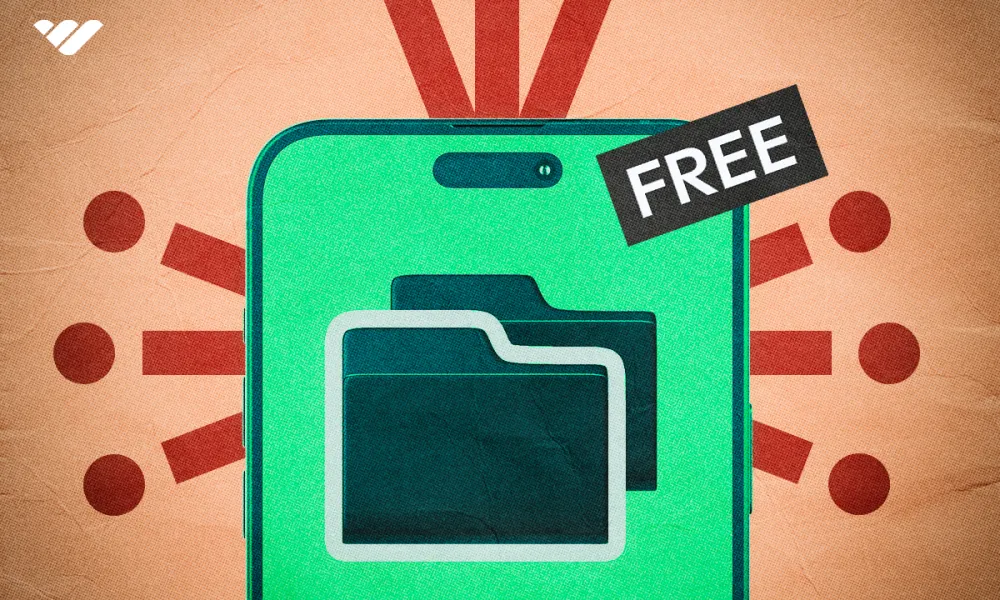Turn your knowledge into income. Sell online courses, ebooks, and templates with proven strategies to grow sales and earn passive revenue.
Key takeaways
- Digital product transactions have risen by almost 70% in the last two years.
- Online learning has grown 900% since 2000, creating a massive audience for digital products.
- Info products generate passive income since they can be sold repeatedly without additional effort.
- The online course market will be worth over a trillion dollars by 2030.
- Successful digital product creators must choose a specific niche and product type first.
As a content creator, I've been selling digital info products like courses, ebooks, and templates for years and have made over $1 million.
Lately, I've seen other fellow creators and freelancers wanting a slice of this pie, and they've started creating info products to sell.
In the last two years alone, digital product transactions have risen by almost 70%, meaning that creators are profiting from selling educational products.
The demand for creating, marketing, and selling digital products is at an all-time high, and it will not slow down anytime soon.
What is an info product?
An info product is a digital resource focused on teaching or solving a specific problem.
These products include online courses, ebooks, webinars, and guides—anything that delivers useful, structured information for people to download or access online.
The goal is to provide valuable insights, skills, or solutions in a convenient, self-paced format.
Info products work because they package expertise into accessible, reusable content.
Once created and promoted, they offer a way to reach people beyond one-on-one interactions, making it possible to help a broader audience.
Why creating info products can be hugely profitable
For anyone making money online, if you're in a career and you've been doing that career for a long time, the next logical step is always going to be to teach others how to do what you do and create an additional source of income for yourself.
- Volky, Digital Nomad Community
One thing that attracted me to creating info products like courses or ebooks was the ability to monetize my knowledge into a product that can be sold repeatedly without additional effort.
For example, I recently created a workbook and 1-hour video course called Pin & Win: Mastering Pinterest Marketing.
I spent the weekend outlining the steps and recording my process. I also spent a few hours designing my supplemental workbook in Canva.
I then created a simple sales page and worked on marketing it to my audience.
My audience consists of bloggers and creators who are struggling to grow their blog traffic. Once I published my info product and marketed it on YouTube, I made over $3,200.

Unlike one-time services or hourly work such as freelancing, info products like templates, webinars, or membership sites let you reach more people with a single product, creating a steady income stream.
Once the initial work—developing and packaging your content—is done, you can market and sell it repeatedly.
Each sale adds directly to your bottom line with little ongoing cost. This can also be passive income, which is considered the best income for creators since it's run on autopilot.
Plus, with online learning having grown 900% since 2000, there’s a growing audience ready to invest in learning new skills or solving problems quickly.
You can set your own prices with your info products too, ensuring you'll make sales. The more value your product provides, the more you can charge.
How you can make money with info products
I don't want to sound like info products are a surefire way to make money as a creator—because they aren't always winners—but there are things you need to set up to be successful, like having a niche and deciding on the right product.
Choose your niche
A niche is a topic, industry, or audience you want to help. For example, suppose you're a college student interested in starting a website or YouTube channel. You can draw from your interests, like dorm decor, college study tips, or budgeting for college.
From that list, pick one topic that resonates with you and that you feel you can "talk" about for years and years and years.
When I started my freelance business in 2014, I started a blog about freelancing. Ten years later, I'm still talking about this topic.
But it's okay if you lose passion or motivation to talk about your niche. An easy fix is to create content related to all your passions with a lifestyle blog.
Cassie Scroggins is an influencer and blogger who blogs about weight loss, blogging, beauty, and parenting.
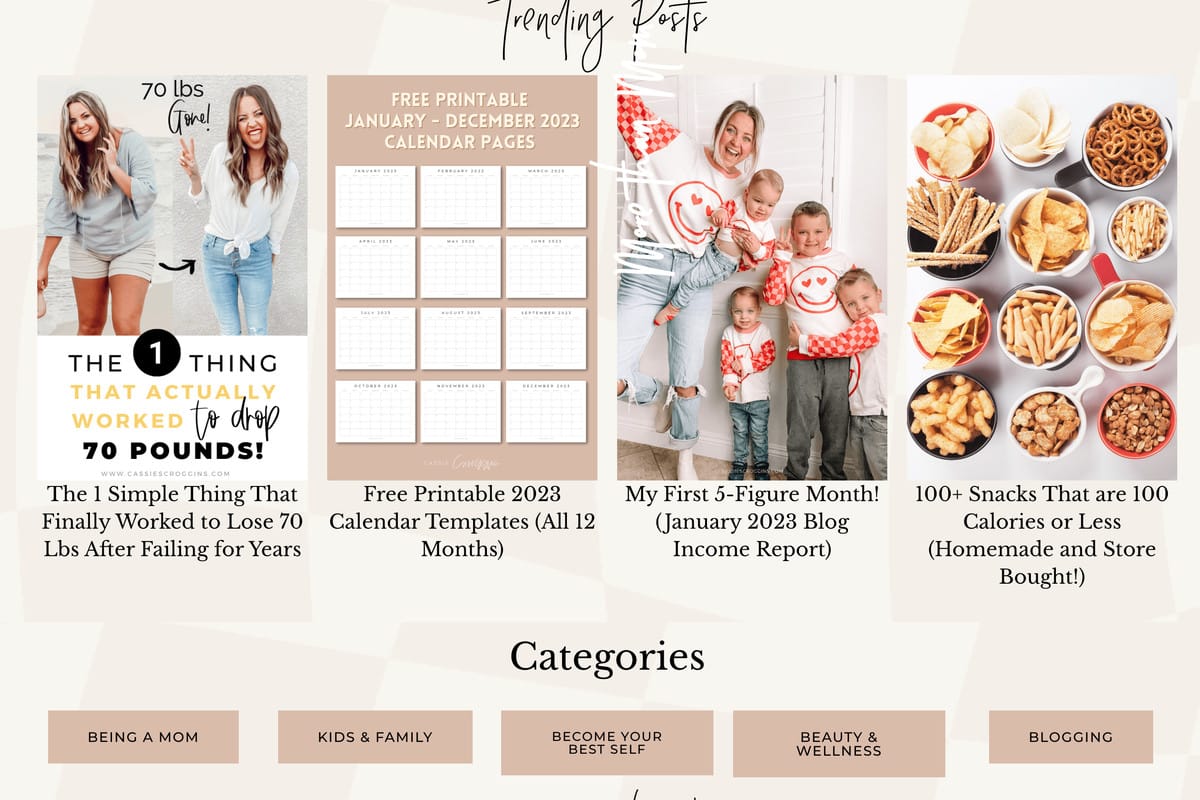
Her audience is moms, and many moms want fashion and beauty tips and help with weight loss after pregnancy.
You can also find your niche by looking at the top niches for digital products sold.
Selling a course in the lifestyle niche could prove more profitable than creating a course for gamers.
Decide on a product type
The next thing successful creators do is decide on a product type. While you might think that creators who share content about making money online make the MOST money by selling courses, your audience may want a template rather than a course.
For example, sewing and crochet bloggers often provide patterns on Etsy to help their audience.
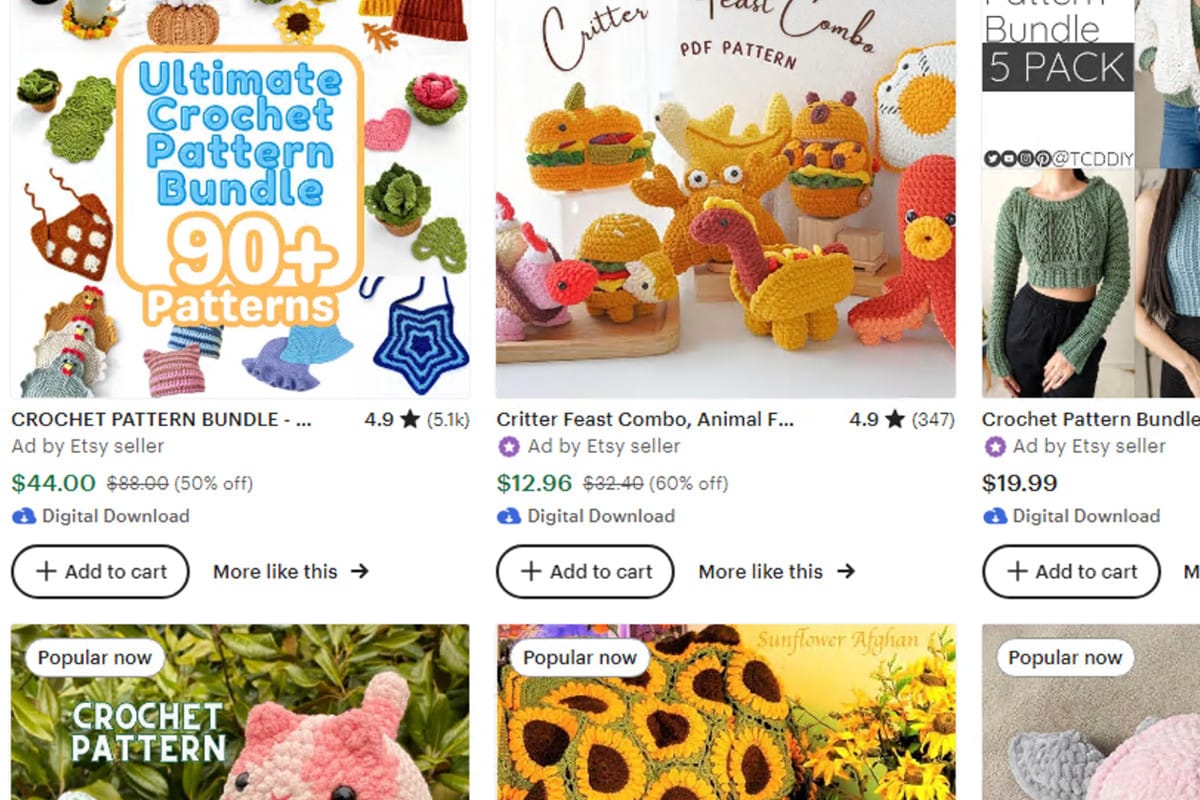
Meanwhile, nurses who start a blog or Instagram profile often sell nursing cover letters and resume templates.
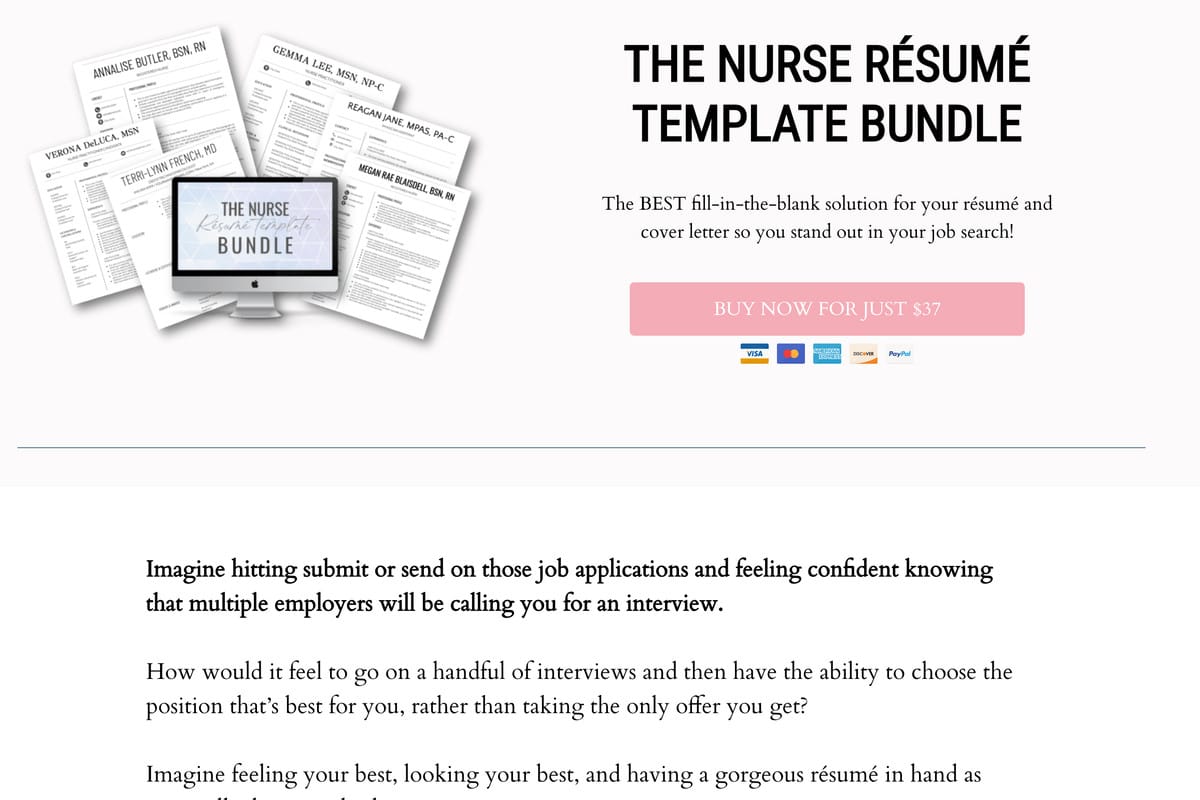
If you don't know if your audience would enjoy an eBook or course, ask them! You can set up a simple survey and ask them what they enjoy the most: watching, reading, or something quick and easy like a fill-in-the-blank, done-for-you info product.
9 of the most profitable info products to sell
1. Online courses
By 2030, online courses will be worth over a trillion dollars.
Selling online courses is probably the #1 way creators can make money at home. What's even better is that creating an online course requires few tools or steps.
When creating one myself, I first outline my course ideas and "chapters." I think about how someone would expect to learn a topic.
For example, if you want to create a course on selling on Instagram, start by opening up an Instagram account and going through the steps to optimize your account for selling.
I then use a course platform like Whop to upload all my lessons.
From there, I create additional resources like planners, workbooks, or guides using Canva.
I write some sales copy, set the price, and start telling my audience about my new info product.
2. ebooks
Jeremie Lander from Better Finance Today LLC
An easy way to create a sellable info product is to write and sell an ebook. You can use help from an AI writer like ChatGPT and edit your book with a tool like Grammarly.
Plus, it's a much-in-demand industry, with a market size valued at $20 billion.
Many creators can leverage their knowledge of a particular topic and write a few chapters. For example, Jeremie Lander in the video above sells ebooks that teach others how to grow their credit.
While he uses Whop to sell his book, he drives even more traffic to it through social platforms.
When it comes to marketing ebooks I do organic sales — meaning I don't run ads, I don't have any paid advertisement, I just use my following on social media whether it be YouTube, TikTok and Instagram, to drive sales directly to these books.
- Jeremie Lander, author
3. Membership sites
People want connection more than ever, and a membership site can help you achieve that and more.
With a membership program, you create a space where members pay regularly to access a community and exclusive content or tools that you update on an ongoing basis. Instead of selling a single product like an ebook or course, memberships give your audience a reason to keep returning month after month.
People join because they want ongoing support, fresh insights, and interaction with others in the group.
You can easily create a membership using Whop. After signing up you can set up your membership and decide what you want to offer.
For example, Jasen Hunt sells memberships to an online community where he teaches members how to master CAD and make money.
I'm a professional Auto Cad trainer and I run the only land survey drafting community in the world.
- Jasen Hunt, Creator of Land Survey Drafting Community
4. Digital templates
If you think creating a multi-lesson course or multi-chapter ebook will take a lot of time or resources, you can still create a successful info product with digital templates.
People just want a quick win, and most digital templates give them that result.
For example, I sell templates and prompts on what to say to clients and what to post on social media for client work.
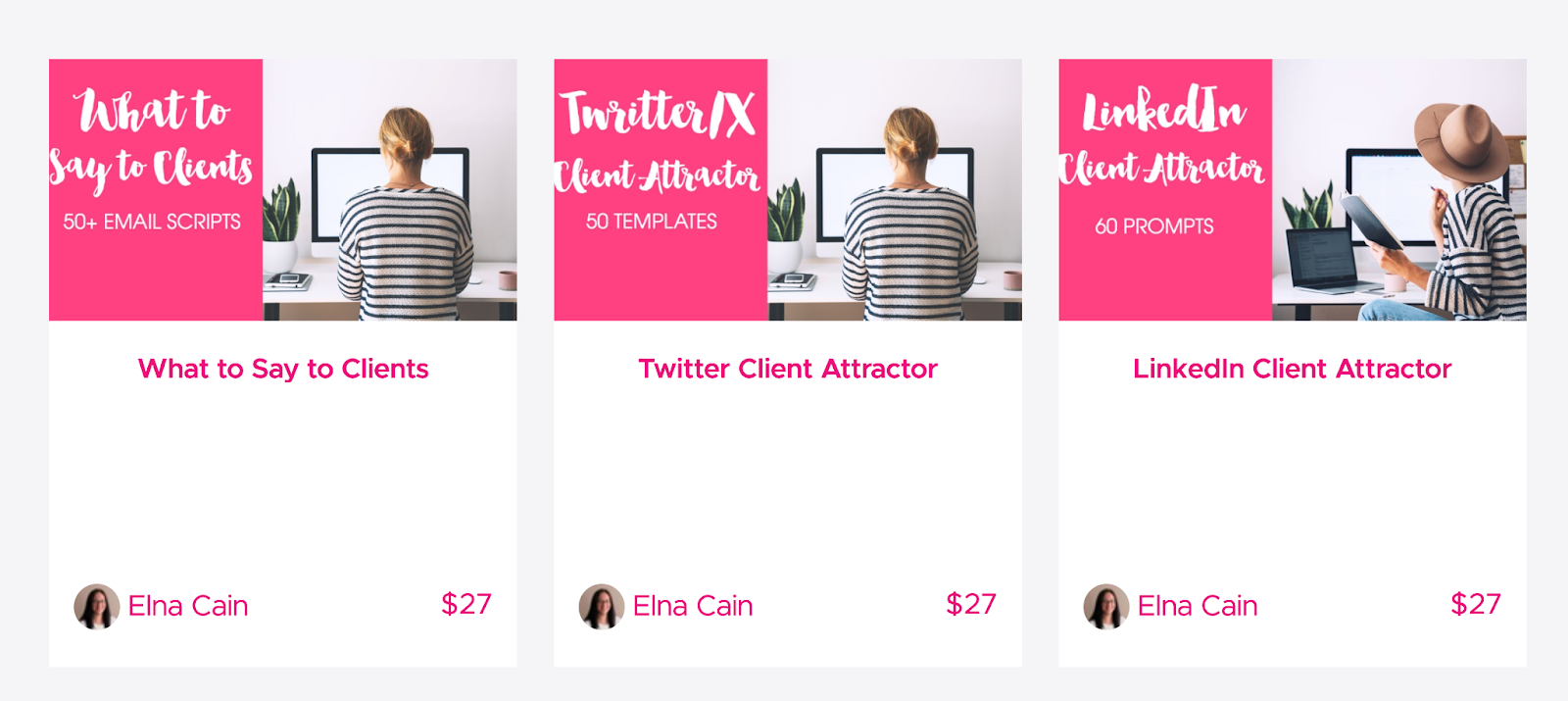
Creating and bundling these simple scripts and prompts into a resource guide for my audience took no time.
Plus they provided a quick win for my followers since they could immediately use my script or prompt to find clients.
5. Webinars
For some creators, webinars work well as a lead magnet to build an email list. Once they have a list of subscribers, they can create an email funnel to guide them toward a high-ticket offer, like a coaching program or membership.
Webinars allow you to showcase your expertise, connect directly with potential clients, and offer value upfront.
These webinars or training sessions can be a single one-hour video or broken down into several shorter videos.
Shorter videos make it easy for subscribers to consume the content and keep them interested throughout the training.
The goal is to establish trust and offer actionable advice so that when they reach your final offer, they're more likely to see the value and purchase. With the right setup, this funnel can become a reliable pathway for converting leads into high-value clients.
Gillian Perkins does this with her free webinar training, "The 100k Breakdown, " leading to 1:1 coaching sessions.
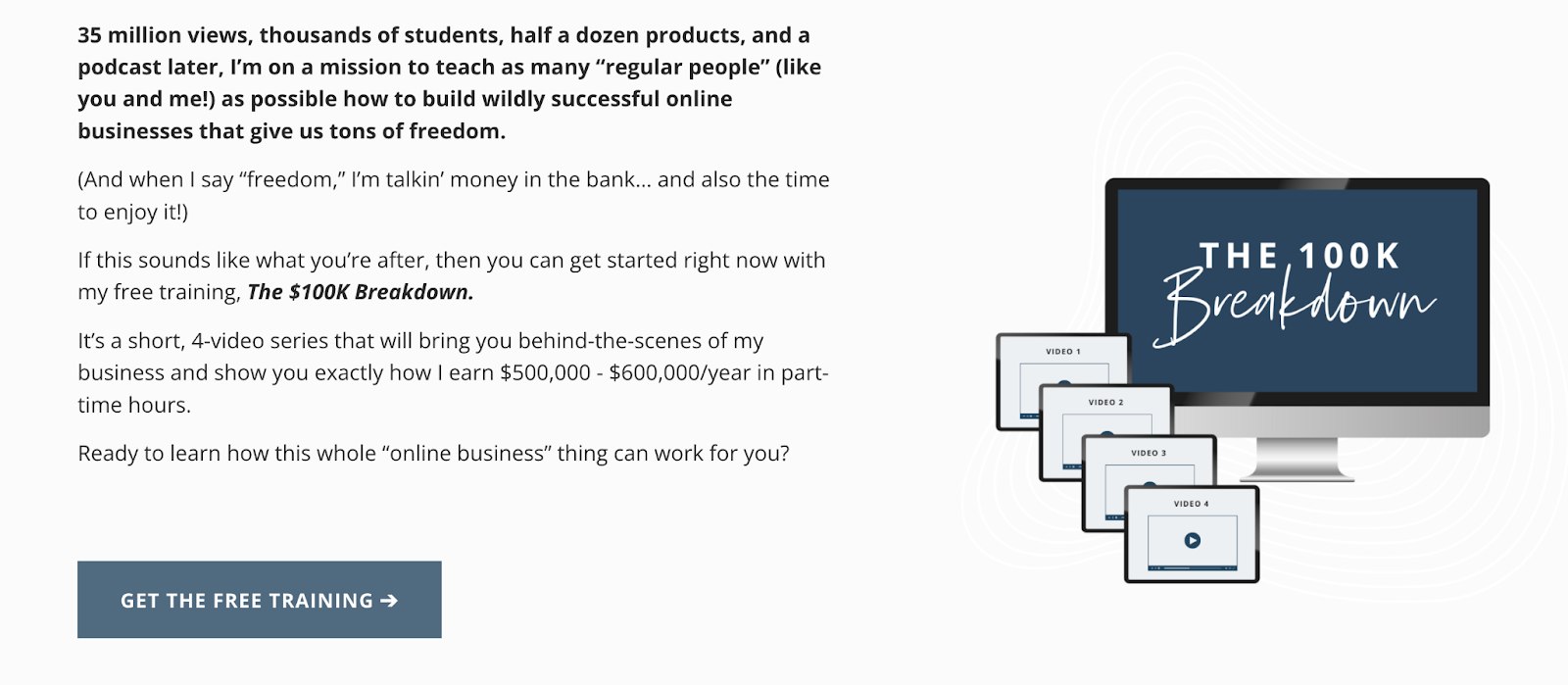
You can also sell webinar training as information products. My Pin & Win masterclass is a one-hour webinar training and workbook I sell for $197.
With only a handful of webinars, you can make passive income easily.
6. Podcasts
While most podcasts are free to listen to, you can use them as an info product with a membership-only podcast.
You can also upsell premium content if you want to use your podcast to grow your audience and brand.
For example, Brett Malinowski uses his podcast to grow his audience and drive traffic to his paid offers.
Brett Malinowski, Head of Marketing at Whop
Not only can you make money from sponsors, you can also send traffic to your own digital products.
- Brett Malinowski, WGMI podcast
7. Coaching programs
Before I sold courses, I coached other freelancers. The coaching industry is highly profitable, whether you want to be the next Tony Robinson or just help others with their problems.
For example, ICF-accredited corporate coaches can start making $55k/year.
But even if you aren't accredited, you can still earn income through coaching. Content creators often offer social media, business, and website-building coaching services.
Corey Wayne offers life and peak performance coaching and charges $1,250 for a one-hour phone consultation.
Alexa Saarenoja exploded on YouTube, created a signature coaching program to help new YoutTubers, and generated $37,000 within a weekend.
8. Subscription services
Subscription services are profitable if you’re looking to build recurring revenue and keep customers engaged.
With a subscription, you deliver value regularly—whether that’s through exclusive content, tools, or templates.
Instead of a one-time sale, subscriptions keep customers coming back month after month. You can scale up without adding extra workload or needing more staff.
Once your subscription is set up, selling more doesn’t require more fulfillment—meaning you can multiply your revenue without changing your team or process.
This setup makes it possible to grow significantly, even 10x your income, while keeping everything streamlined.
You can build your subscription directly on platforms like Whop.
9. Digital planners
Similar to templates and guides are digital planners. You can easily create these and sell them passively.
After creating a large online course, I didn't have the stamina to do it again, so I decided to make smaller info products to supplement my income.
This resulted in different digital planners that my audience ate up.
Examples of popular planners to sell are:
- Daily productivity planner: Focus on helping users organize daily tasks, set goals, and prioritize their day efficiently.
- Meal planning & grocery list planner: Perfect for people who want to plan their weekly meals and make grocery shopping lists in one place.
- Budget & finance planner: This planner helps users track expenses, set financial goals, and manage their monthly budget, with sections for income, savings, and debt.
- Social media content planner: You can create a planner for content creators and businesses to organize posts, schedule content, and track engagement across platforms.
- Health & fitness planner: A planner to set fitness goals, track workouts, monitor meals, and keep a record of progress over time.
You can sell digital planners on Whop, your website, or Etsy.
Strategies for marketing your info products
Marketing your info products doesn’t have to be complicated if you focus on the right strategies.
Here are practical ways to reach your audience, build trust, and turn your info products into reliable income streams.
Set up your socials
A proven method to get in front of your audience is to get on social media.
Depending on your audience's interests and age, you may start a TikTok account, Instagram account, Facebook page, X profile, LinkedIn profile, or YouTube channel. Here's a list showing the most popular age group for each platform:
- TikTok: 18-24 years
- Instagram: 18-24 years
- Facebook: 25-34 years
- X (Twitter): 25-34 years
- LinkedIn: 25-34 years
- YouTube: 25-34 years
Sophia Lee is a content creator with a YouTube channel, an Instagram account, and a wildly successful TikTok channel with over 650k followers.
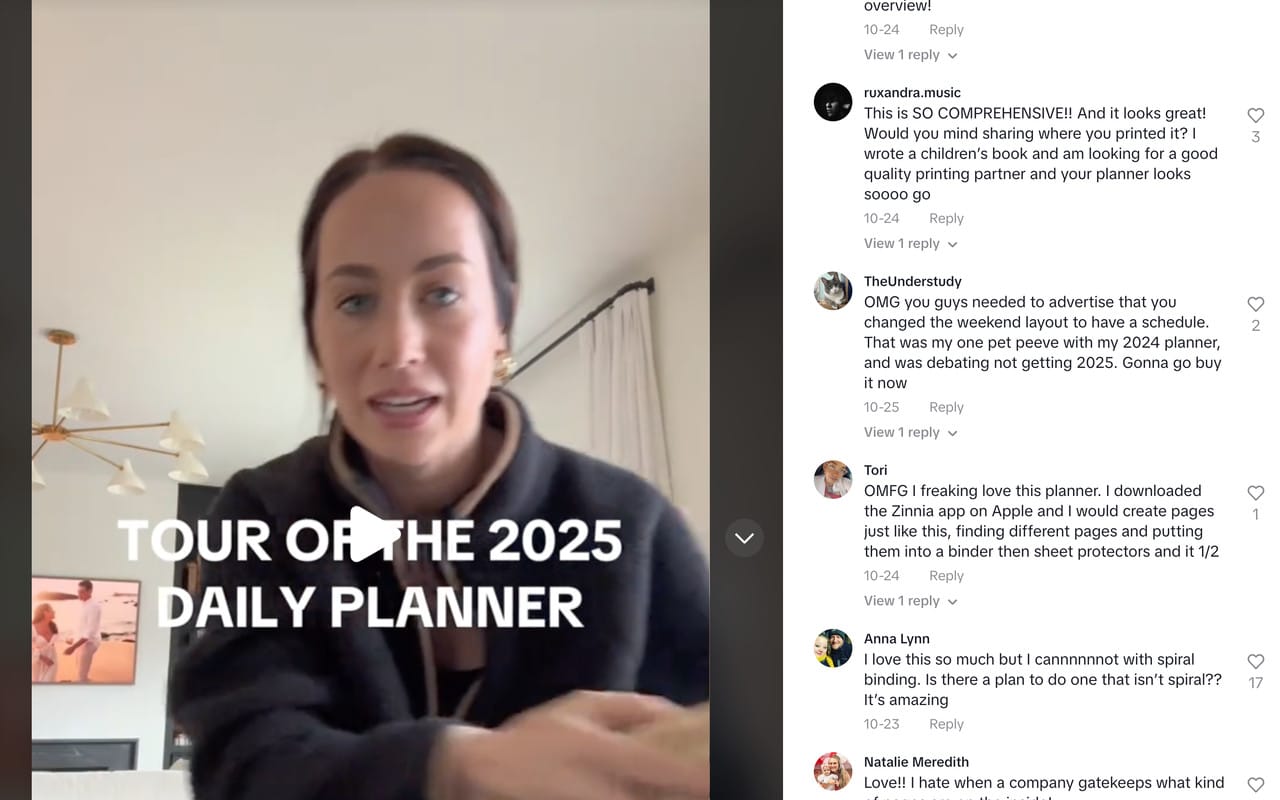
So, depending on where your audience hangs out, create those social profiles on the best platforms.
For my audience, that's LinkedIn, YouTube, and X.
Build an online storefront
If you decide to sell your info product on Whop, the next step to marketing your offer is to build an online storefront.
With its onboarding process, Whop makes it easy to customize and add what you want to your online storefront.
Drag and drop your logo, info products, and apps to create an inviting storefront.
List your products on a digital marketplace
In the backend of your storefront, add your products and set up descriptions, pricing, and any downloadable files or access links your customers will need.
Customize the details so your product page reflects the value of what you’re offering. This will make it easy for potential buyers to see what they’ll get and take action.
Launch a newsletter
It's wise to set up and launch a newsletter to help capture your social media audience. Because not everyone who comes in contact with your information product will buy it, it's best to have a backup plan.
There are many newsletter platforms, but popular ones include Whop, beehiiv, and Substack.
Starting with a free plan can be smart, especially if you’re exploring your options and want to avoid feeling locked in right away.
You’ll always have the flexibility to upgrade later as your needs and business grow.
If you’re looking for a platform that combines everything—sending newsletters, managing memberships, and selling digital products—Whop is worth a look.
Whop supports subscriptions, online courses, and community-building too.
Why do so many info products fail?
Over the years, I’ve seen new creators launch $5,000 info products or massive influencers trying to get their followers to pay for their Substack subscription—with no or little sales.
They assume their audience will buy in just because they’re following, but the results are often disappointing without clear value, tailored content, or a genuine connection.
Here are some common pitfalls while trying to sell your info product.
Underpricing or overpricing
Setting the wrong price can hurt your sales.
Underpricing might make your product look less valuable while overpricing could turn potential buyers away.
Research what similar products in your niche are priced at to find a fair balance.
And it's okay to change your price. When I launched my Pin & Win Masterclass, I sold it for $129.
Once I was making multiple sales and getting views on my YouTube videos about my information product, I increased my price to $197 and continued to make sales.
Ignoring customer feedback
Customer feedback is gold for improving your info product and future offerings.
Failing to listen to feedback can result in a product that doesn’t meet expectations, leading to lower sales and poor reviews.
Create a file of customer feedback and review them monthly.
At the end of my course, I have a section for customer feedback. This helps me ensure that my product is exactly what they want.
Overloading with content
Trying to pack too much information into one product can overwhelm buyers.
Focus on delivering clear, actionable content instead of aiming for quantity, which can improve customer satisfaction and completion rates.
I would create new lessons and modules with my flagship product every year.
Well, by the end of it all, this course had over 70 lessons. I had to stop adding new lessons and just create new info products.
Not having a clear call to action
When selling info products, make sure every piece of your marketing—whether a landing page, email, or social post—has a clear call to action.
Buyers must know what they’re getting and how to purchase it, so avoid burying the details.
I also examine my audience's pain points and focus on one or two to sell my information product as the solution.
Create and sell your info products with Whop
Selling info products is one thing, but making consistent sales is where most creators hit a wall.
That’s where Whop makes the difference.
Instead of juggling multiple tools, you get a single platform built to help you sell courses, memberships, templates, newsletters, and more.
You can package your product as a one-time purchase or a subscription, layer on exclusivity with waitlists or approvals, and even combine different types of offers in one storefront.
Whop’s apps give you the flexibility to shape your business the way you want—while the platform handles payments, customer access, and scaling behind the scenes.
The result? More time for creating, less time wrestling with tech.
If you’re ready to turn your knowledge into a business that sells itself, create your free whop and start today.


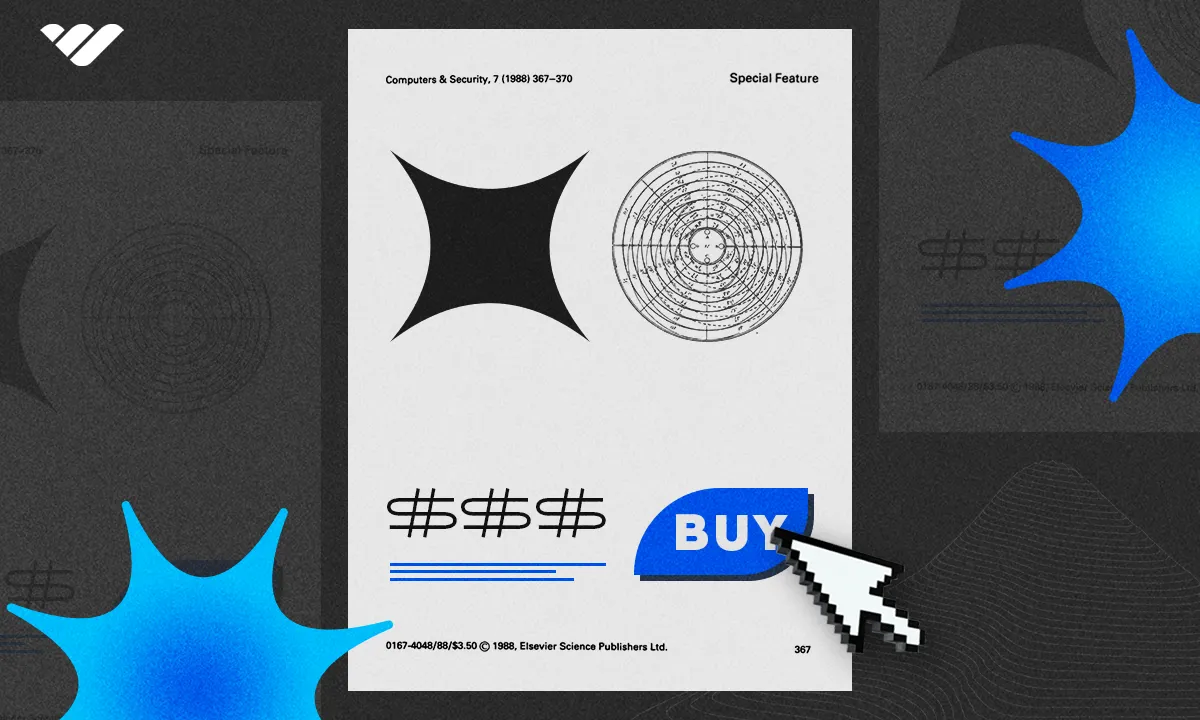
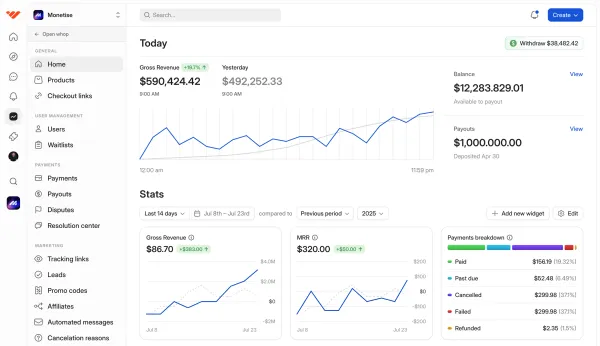
![How to sell digital products without a website - ultimate guide [2026]](/blog/content/images/size/w1000/2024/02/How-to-Sell-Digital-Products.webp)


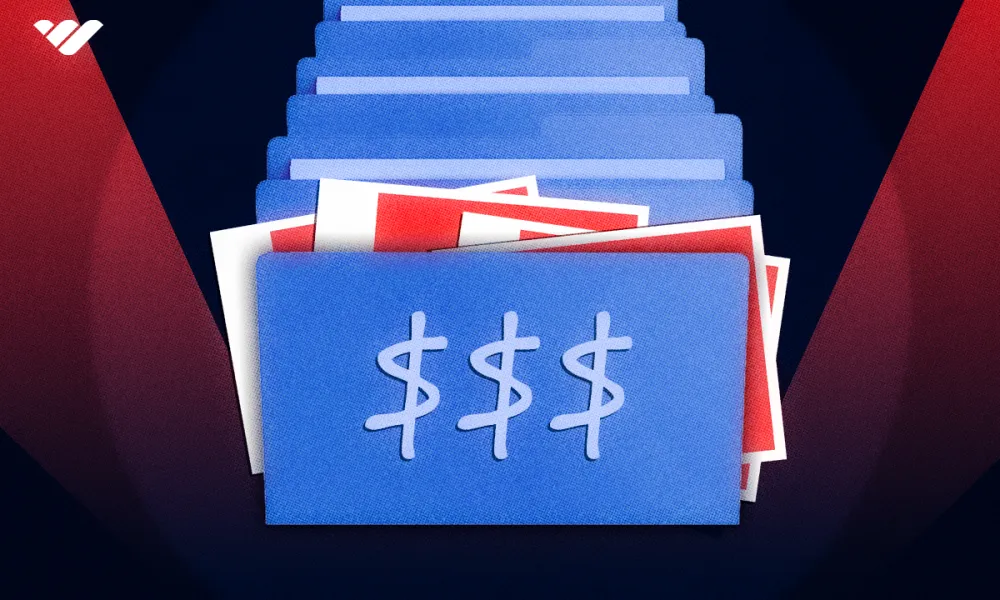
![Where to sell digital products [2026]](/blog/content/images/size/w1000/2023/11/Where-To-Sell-Digital-Products.webp)

